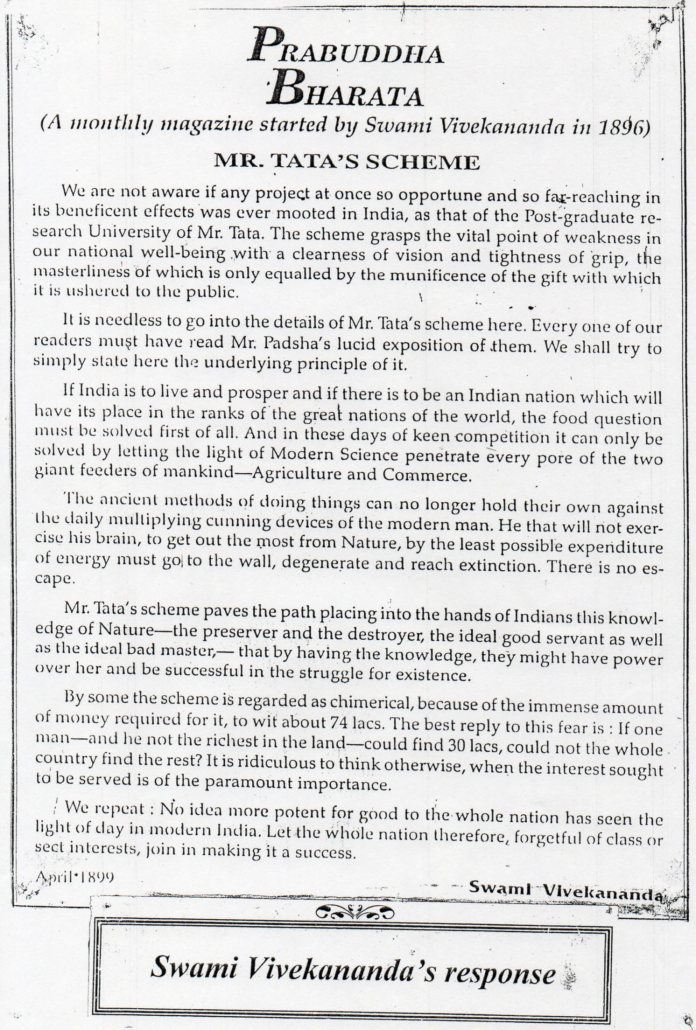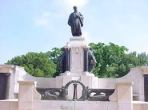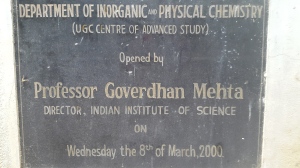It is 27th May again! In 1909 on this day, the vesting order for the establishment of the Indian Institute of Science was issued. Last year on this day, I had written a blog about this great institute and the Indian Association for Cultivation of Science and argued that they defined India before independence (1). One of the reasons was the choice in naming these institutions as Indian. Calcutta in the state of Bengal and Bangalore in the Mysore Kingdom built educational institutions named as ‘Indian’, many decades before India got independence. In Uttar Pradesh, Banaras Hindu University and Aligarh Muslim University were established in the following decades. One can still see this difference in the view points of the people of eastern and southern India in comparison to the northern states. Often I feel that there is a huge communication gap between the people of these regions in India for historic and geographic reasons.
This blog is not about the names though. It is about whose vision led to the Indian Institute of Science (IISc). It is become a popular myth that IISc resulted from a stimulating discussion between J N Tata and Swami Vivekananda while on a ship from Yokohama to Vancouver. A recent post in TheBetterIndia mentions that they met on 31 May in 1893 (2). If one is not careful in reading this post, the myth will resonate as a fact. I have written a few blogs about learning history and pointed out how difficult it is to learn history (3-5). I also believed in this myth and have written about this in my first blog on ‘Learning History’ (3) and also a recent editorial in Current Science focusing on conflict of interest (6). I had email discussions with two experts: Dr. Subbarayappa who authored a book on the history of Indian Institute of Science (7) and Prof. P. Balaram, our former Director, who ensured that we will have an Archives and Publications Cell at IISc. I have also been helped by Mr. Sharath Ahuja, who was taking care of the Archives and Publications Cell in the initial years. I am pleased to share the images from Mr. Ahuja, of the Tata statue at IISc and the commemorative stamp issued by the Government of India during our Centenary. You can see the replica of our Main Building held by Tata in his hands! It is a fitting statue for the founder in front of the iconic building shown in the stamp.
The letter written by J. N. Tata to Swami Vivekanada, on 23rd November 1898, offers the most important clue. This is reproduced in the book by Subbarayappa and also the TheBetterIndia portal. This is what Tata says at the beginning: “I trust, you remember me as a fellow- traveller on your voyage from Japan to Chicago. I very much recall at this moment your views on the growth of the ascetic spirit in India, and the duty, not of destroying, but of diverting it into useful channels.” Clearly, he does not mention about any discussion about the need for a research institution. On the other hand, Tata continues this sentence with: “I recall these ideas in connection with my scheme of Research Institute of Science for India, of which you have doubtless heard or read” (emphasis added).
Prof. Balaram gave an excellent talk on the history of the Indian Institute of Science at the National Centre for Biological Sciences recently. Thankfully his talk is available on YouTube (8). I would encourage anyone interested in the history of Indian Science in 20th Century, not just IISc, to listen to this talk spending the 90+ minutes! Prof. Balaram quotes from primary sources about J. N. Tata’s plans for Science and a research Institution in India years before he met Swami Vivekananda during his voyage to Chicago. Why then, Prof. Balaram decided to include Swami Vivekananda in the commemorative stamp during the centenary of IISc? His talk has some clues as to how this happened. If you are keen, you may listen to the talk.
Tata in his letter went on to say the following: “I am of opinion that if such a crusade in favour of an asceticism of this kind were undertaken by a competent leader, it would greatly help asceticism, science, and the good name of our common country; and I know not who would make a more fitting general of such a campaign than Vivekananda.” Tata clearly wanted Swami Vivekananda to lead the Institute. In his book, Dr. Subbarayappa mentions that Swami Vivekananda’s reply to the letter by Tata could not be traced. However, an Editorial was published in April 1899 in Prabhuddha Bharata, a magazine started by Swami Vivekananda. The editorial is not signed and perhaps was written by the Swami. It starts with this sentence: “We are not aware if any project at once so opportune and so far reaching in its beneficent effects was ever mooted in India, as that of the post-graduate research University of Mr. Tata. The scheme grasps the vital point of weakness in our national well-being with a clearness of vision and tightness of grip, the masterliness of which is only equalled by the munificence of the gift which is ushered to the public”. The scanned image of the editorial can be seen below:

Clearly, Swami Vivekananda recognizes IISc as an outcome of a project mooted by Tata and was very enthusiastic of this project. He was invited by Tata to be the first head of the Institution. However, it is clear that Indian Institute of Science was the result of J. N. Tata’s vision and this vision was not influenced by any discussion with Swami Vivekananda. J. N. Tata not only planned IISc, he also built steel and power plants to help India become what it is today. One cannot celebrate IISc or India, without celebrating the great J. N. Tata.
- https://earunan.org/2017/05/28/indian-institute-of-science-iisc-and-indian-association-for-cultivation-of-science-iacs-defined-india-before-independence/
- https://www.thebetterindia.com/127599/swami-vivekananda-jamsetji-tata-chicago-conference-iisc/
- https://earunan.org/2015/04/02/learning-history/
- https://earunan.org/2015/04/11/learning-history-ii-and-happy-new-year/
- https://earunan.org/2015/04/14/learning-history-3-birthday-new-year-and-so-on/
- E. Arunan, Curr. Sci. (Weblink: http://www.currentscience.ac.in/Volumes/114/07/1385.pdf )
- B. V. Subbarayappa “In Pursuit of Excellence: A History of The Indian Institute of Science” Tata-McGraw-Hill 1992.
- https://www.youtube.com/watch?v=horcEiRiHh0








